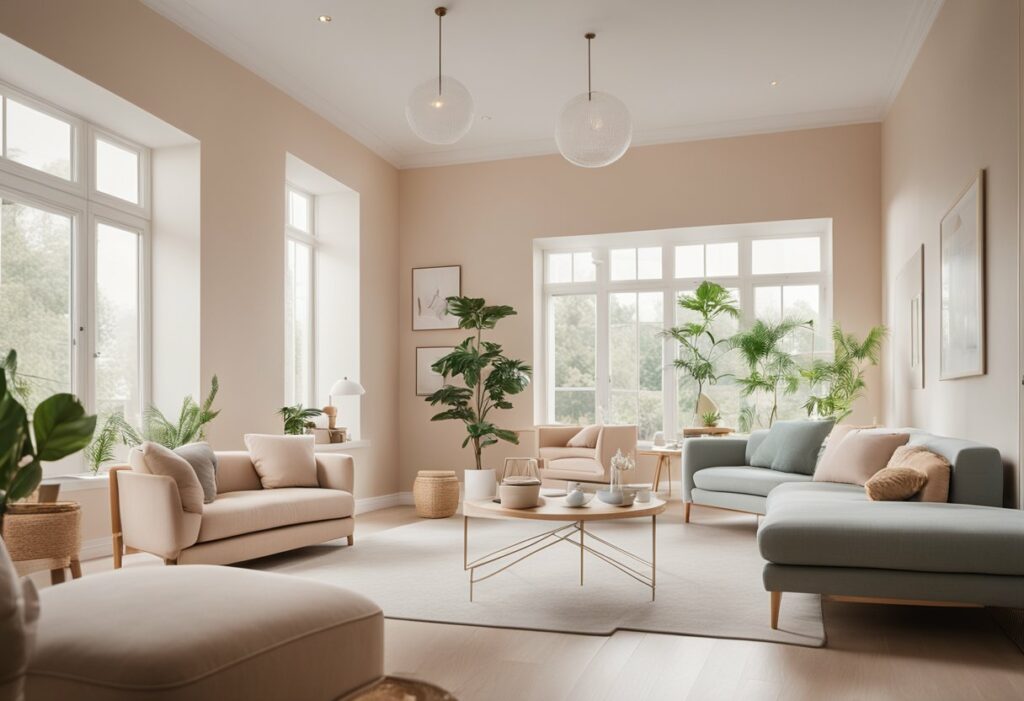Light Colour Interior Design: Tips and Ideas for a Brighter Home
Are you looking to transform your living space into a bright, welcoming environment? Light colour interior design is an excellent way to achieve this. By incorporating light hues into your home decor, you can create a peaceful, calming atmosphere that promotes relaxation and comfort.
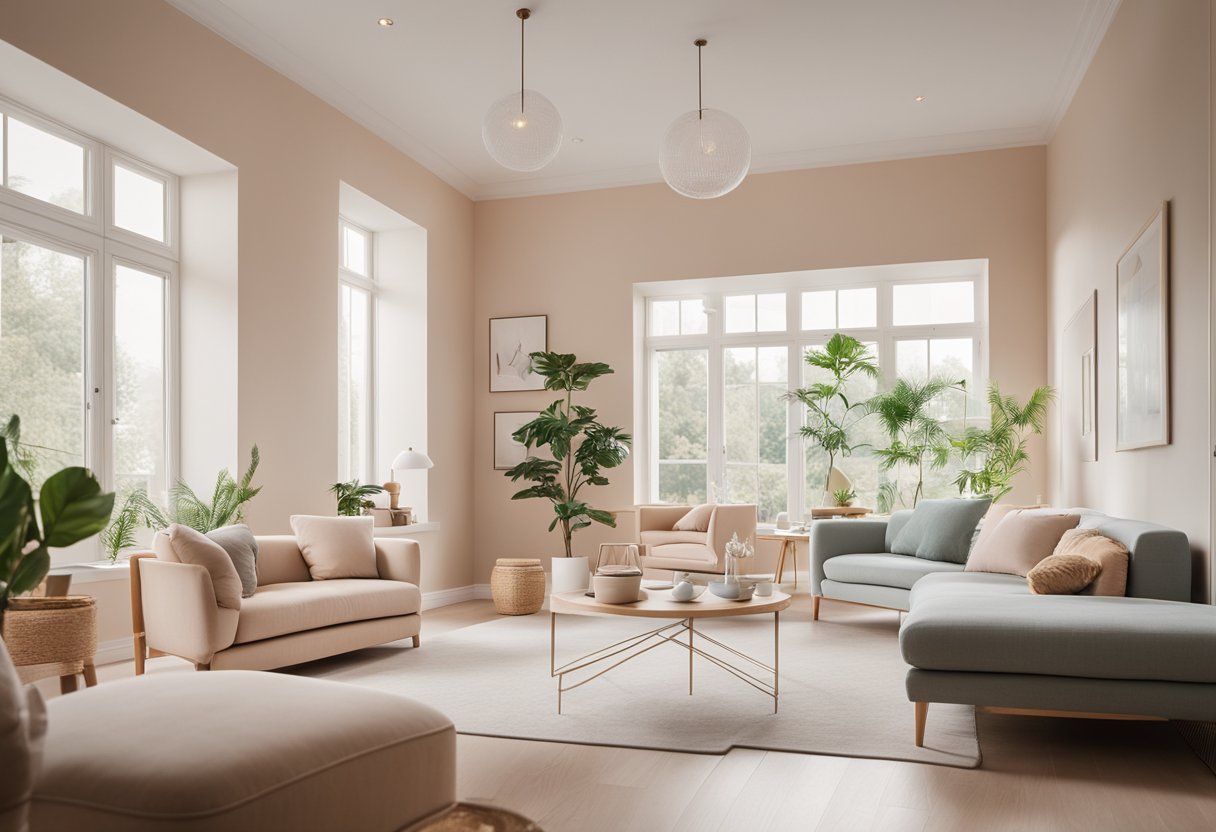
The impact of light colours on interior spaces cannot be overstated. Bright, airy colours reflect natural light and make rooms appear more spacious and inviting. They also have a positive impact on mood and energy levels, helping to create a happy and harmonious environment. Whether you’re redesigning your entire home or just updating a single room, incorporating light colours into your interior design is a simple and effective way to elevate your space.
Strategies for choosing and implementing colour schemes can seem daunting, but with a little guidance, it can be a fun and creative process. From selecting the right paint colours to choosing complementary decor and accessories, there are many ways to incorporate light colours into your interior design. With a little planning and creativity, you can create a beautiful and welcoming space that reflects your personal style and enhances your quality of life.
Key Takeaways
- Light colour interior design can create a peaceful and calming atmosphere in your home.
- Bright, airy colours reflect natural light and make rooms appear more spacious and inviting.
- With a little planning and creativity, incorporating light colours into your interior design can be a fun and effective way to elevate your living space.
The Impact of Light Colours on Interior Spaces
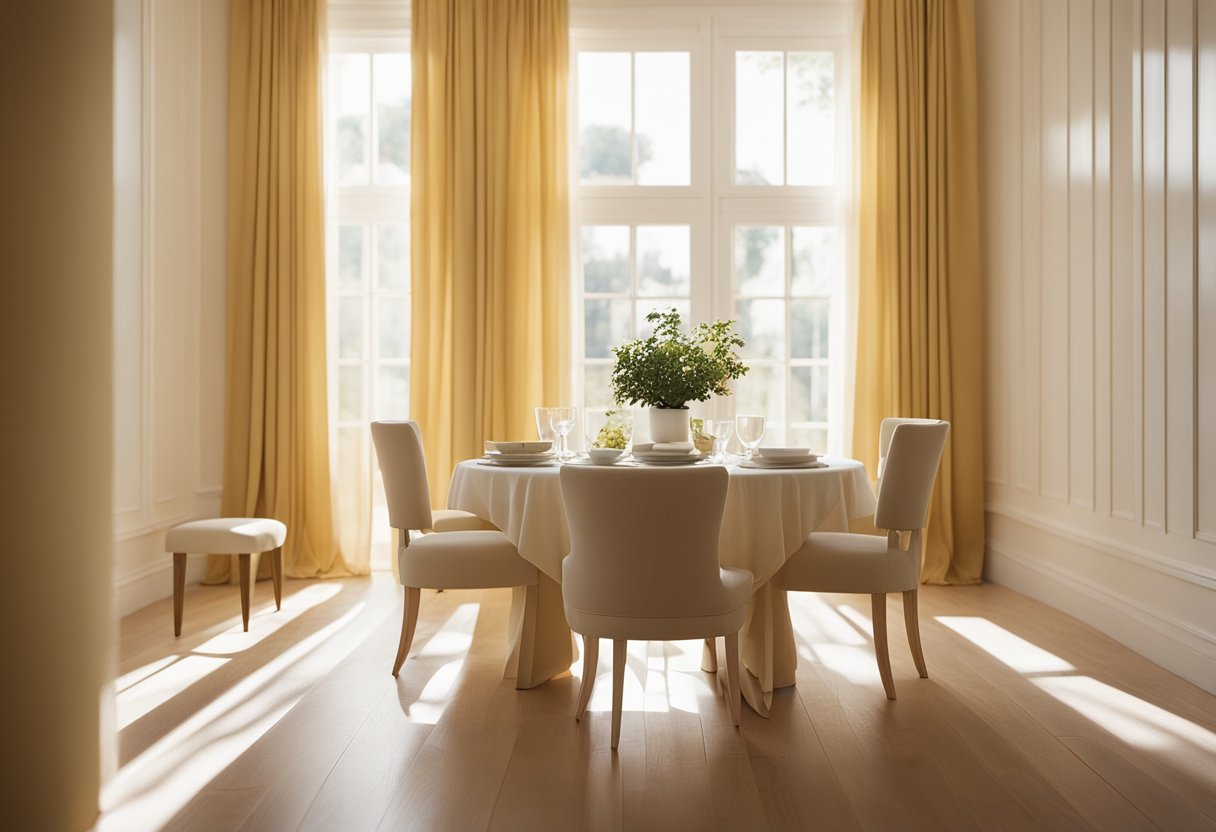
Light colours can have a significant impact on the overall look and feel of a room. They can create a sense of calmness and harmony, and help to establish a serene atmosphere. In this section, we will explore the psychology of colour in design, balancing warm and cool tones, and the influence of natural light on hues.
Psychology of Colour in Design
Colour psychology is the study of how colours affect human behaviour, mood, and emotions. Light colours, such as white, beige, and light grey, are often associated with cleanliness, purity, and simplicity. These hues can make a room feel more spacious and open, and create a sense of calmness and relaxation.
On the other hand, bold and bright colours, such as red, orange, and yellow, can create a sense of energy and excitement. These hues can be used to make a room feel more lively and vibrant, but they can also be overwhelming if used excessively.
Balancing Warm and Cool Tones
When designing a room, it’s important to balance warm and cool tones to create a cohesive and inviting space. Warm colours, such as red, orange, and yellow, can create a sense of warmth and intimacy, while cool colours, such as blue, green, and purple, can create a sense of calmness and tranquillity.
To create a balanced colour scheme, start by choosing a neutral base colour, such as white, beige, or grey. Then, add pops of warm or cool colours through accessories, such as pillows, curtains, or artwork. This will help to create a cohesive and inviting space that feels both warm and relaxing.
Influence of Natural Light on Hues
Natural light can have a significant impact on the way colours look in a room. When choosing colours for a room, it’s important to consider the amount of natural light that the room receives. Rooms that receive a lot of natural light can handle bolder and brighter colours, while rooms with less natural light may benefit from lighter and softer hues.
It’s also important to consider the direction that the room faces, as this can affect the way that colours appear. Rooms that face north may benefit from warmer colours, while rooms that face south may benefit from cooler colours.
In conclusion, the impact of light colours on interior spaces cannot be overstated. By understanding the psychology of colour in design, balancing warm and cool tones, and the influence of natural light on hues, you can create a space that is both beautiful and functional.
Strategies for Choosing and Implementing Colour Schemes
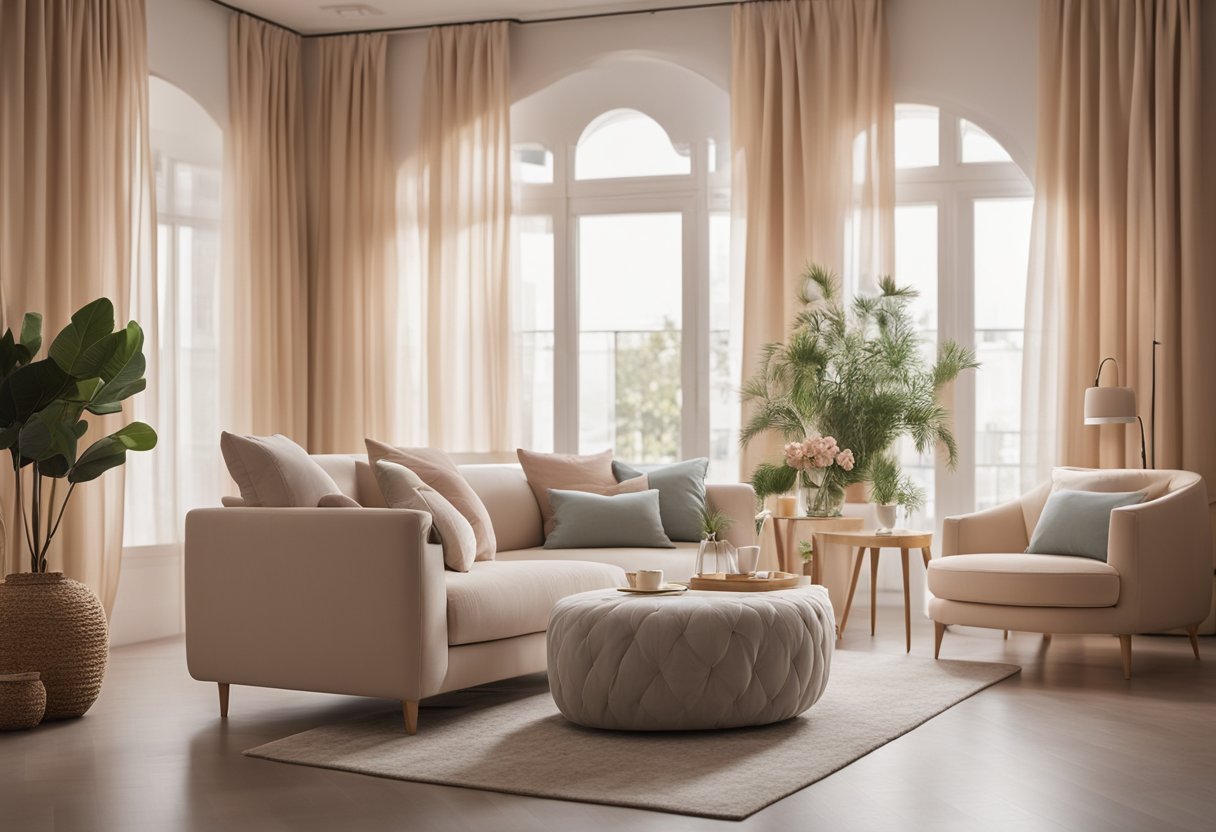
Choosing the right colour scheme for your interior design can be a daunting task, but it’s essential to create a cohesive and visually appealing space. Here are some strategies to help you select and implement the perfect colour scheme for your home.
Selecting a Colour Palette: Tips and Tricks
When selecting a colour palette for your interior design, consider the mood you want to create in the space. Warm colours like red, orange, and yellow can create a cozy and inviting atmosphere, while cool colours like blue and green can promote relaxation and calmness.
To create depth and character in your space, choose a colour scheme with a mix of hues, shades, and tones. Use lighter shades for the walls and darker tones for furniture and accessories. Don’t be afraid to experiment with accent colours to create contrast and interest.
Combining Colours for Depth and Character
Combining colours can be tricky, but there are a few tips to keep in mind. Use the colour wheel to find complementary colours that work well together. For example, blue and orange are complementary colours, and when used together, they create a striking contrast.
Analogous colours, which are colours that are next to each other on the colour wheel, can also work well together. For example, yellow and green are analogous colours, and when used together, they create a harmonious and calming effect.
Accessorising with Accents and Textures
Accessorising with accents and textures is an excellent way to add interest to your interior design. Use curtains, furniture, and accent colours to create a cohesive and visually appealing space.
Textures can also add depth and character to your design. Use a mix of textures like velvet, linen, and leather to create a layered and sophisticated look.
If you’re struggling to create the perfect colour scheme, consider hiring an interior designer. They can help you select the right colours and textures to create a cohesive and visually appealing space that reflects your style and personality.
Frequently Asked Questions
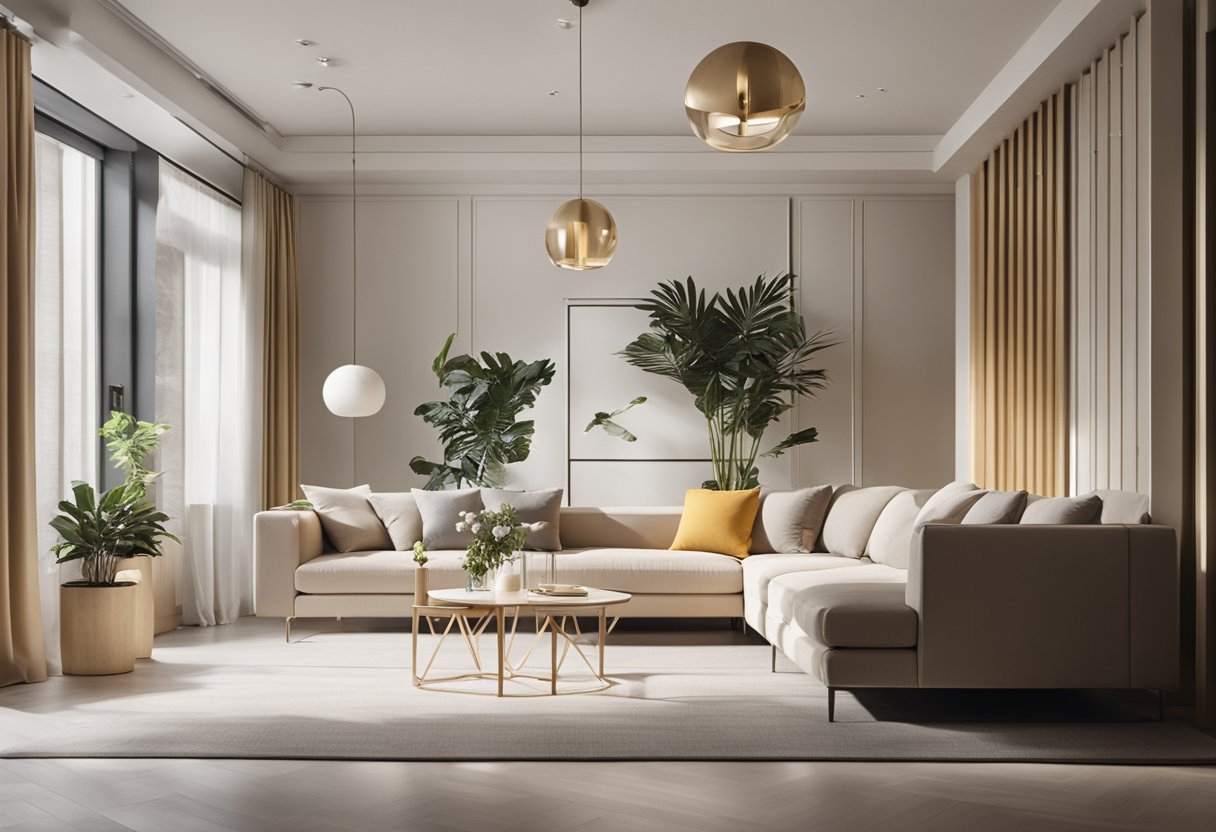
How can light hues transform a living room’s ambiance?
Light hues have the power to transform the mood of a room. By incorporating light shades in your living room, you can create an airy and spacious feel. Light colours reflect natural light, making your living room feel brighter and more inviting. They can also help to create a calm and relaxing atmosphere, perfect for unwinding after a long day.
What are some captivating ideas for integrating light colours in home decor?
There are many ways to integrate light colours into your home decor. You can start by using light-coloured furniture, such as a cream sofa or a white coffee table. Another idea is to incorporate light-coloured curtains or blinds to allow more natural light into your space. You can also use light-coloured accessories, such as cushions, throws, and rugs, to add a pop of colour to your room.
Which light shades are ideal for creating a cosy bedroom atmosphere?
Light shades of blue, green, and pink are ideal for creating a cosy bedroom atmosphere. These colours have a calming effect and can help to promote relaxation and sleep. You can use these colours on your walls, bedding, or accessories to create a soothing and peaceful environment.
Could you explain the three-colour rule and its impact on interior styling?
The three-colour rule is a popular interior styling technique that involves using three colours in a room. The first colour is the dominant colour, which is used for the walls or large pieces of furniture. The second colour is the secondary colour, which is used for smaller pieces of furniture or accessories. The third colour is the accent colour, which is used sparingly to add interest and depth to the room. The three-colour rule helps to create a cohesive and balanced look in your space.
What are the secrets to effectively utilising light and colour in interior spaces?
One secret to effectively utilising light and colour in interior spaces is to use natural light as much as possible. Natural light can enhance the colours in your space and create a warm and inviting atmosphere. Another secret is to use colour in unexpected ways, such as painting the ceiling or using a bold colour on an accent wall. You can also experiment with different textures and patterns to add depth and interest to your space.
What are the top tips for describing the interplay of light within interior design?
The interplay of light within interior design is crucial to creating a harmonious and inviting space. One tip is to use different types of lighting, such as overhead lighting, task lighting, and accent lighting, to create a layered and dynamic look. Another tip is to consider the direction of your light sources and how they will affect the colours in your space. You can also experiment with different light bulbs and shades to create different moods and effects.

